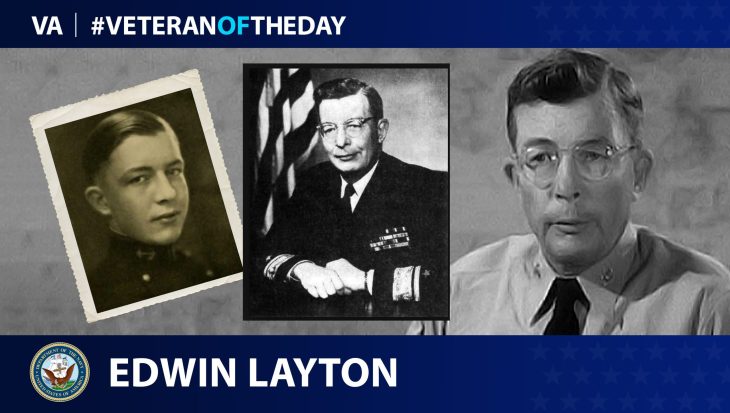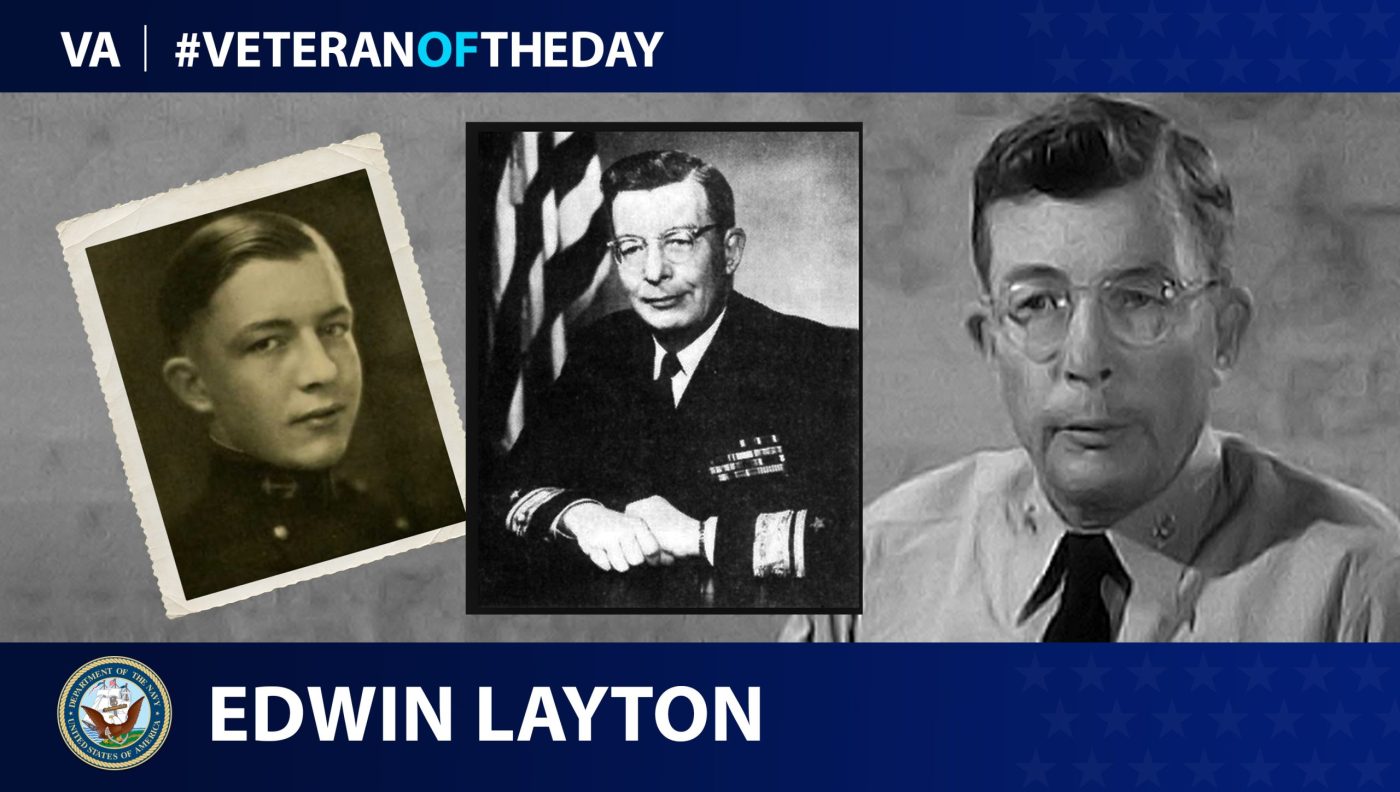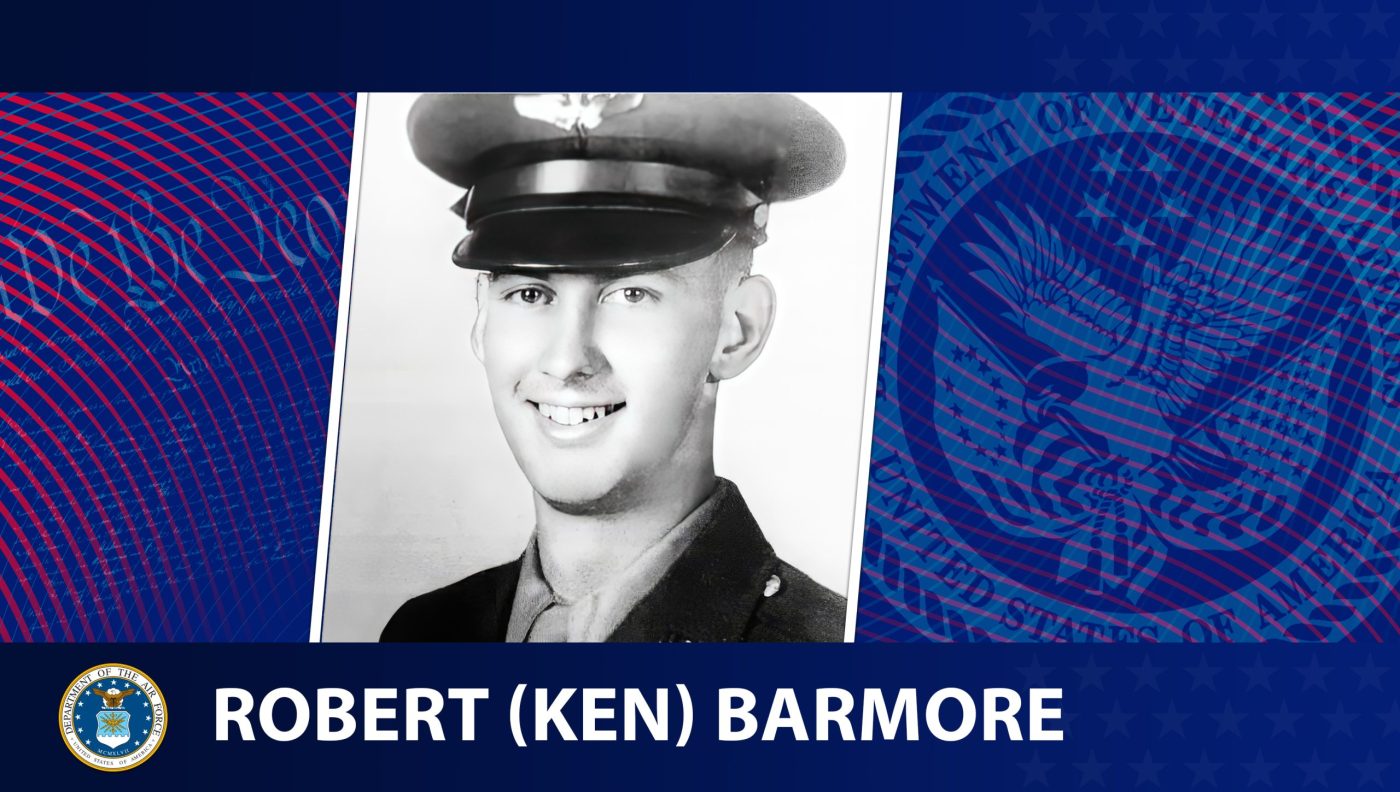
Today’s #VeteranOfTheDay is Navy Veteran Edwin Layton, who played a crucial role in U.S. efforts in the Pacific theater in World War II.
Edwin Layton was born in Nauvoo, Illinois, in April 1903. After graduating from high school in 1920, he attended the U.S. Naval Academy and graduated in 1924. Afterward, he served on USS West Virginia and USS Chase. He then served several tours in East Asia, first moving to Tokyo, Japan, where he studied Japanese at the U.S. embassy. Then, he served as an assistant naval attaché to the U.S. Legation in Peking (now Beijing), China, before returning to sea on USS Pennsylvania.
Layton briefly returned to the U.S. in 1936, when he began working at the Office of Naval Intelligence in Washington, D.C. He then moved back to Asia, where he again served in Tokyo and later commanded USS Boggs.
Layton’s contributions to U.S. operations were particularly helpful due to the significant knowledge on the personalities of several Japanese leaders whom he met during his service in Tokyo. Prior to the attack on Pearl Harbor, Layton served as a fleet intelligence officer on the naval base. He continued serving in the Pacific after the attack and played a role in planning U.S. operations in the Pacific. He received a Distinguished Service Medal for his role at the Battle of Midway.
Layton was aboard USS Missouri when the Japanese surrendered in 1945. After the war, he returned to the U.S., where he served in several influential positions. He first served in Tiburon, California, as a commanding officer before becoming the director of the Naval Intelligence School. Afterward, he moved to Hawaii to serve as a senior intelligence officer. He also served as an intelligence officer in Japan during the Korean War.
During the final years of his military career, Layton served on the staff of the commander of the Pacific Fleet and later on in the office of the Joint Chiefs of Staff. He retired in 1959 with the rank of rear admiral. Afterward, Layton worked at the Northrop Corporation and opened its first Japan office.
After his service, Layton was recognized on several occasions. In 1971, the Naval War College established the Edwin Layton Chair of Naval Intelligence in his honor. Beyond receiving the Distinguished Service Medal, he was awarded a Legion of Merit, a Navy and Marine Corps Commendation Medal and many other medals. The Office of Naval Intelligence also established the Rear Admiral Edwin T. Layton Leadership Award in his name.
Layton died in 1984. He was 81.
We honor his service.
Nominate a Veteran for #VeteranOfTheDay
Do you want to light up the face of a special Veteran? Have you been wondering how to tell your Veteran they are special to you? VA’s #VeteranOfTheDay social media feature is an opportunity to highlight your Veteran and his/her service.
It’s easy to nominate a Veteran. All it takes is an email to newmedia@va.gov with as much information as you can put together, along with some good photos. Visit our blog post about nominating to learn how to create the best submission.
Writer: Khaled Maalouf
Editors: Cate Manning, Marisa Bunton
Graphic Designer: Saul Leon
Topics in this story
Link Disclaimer
This page includes links to other websites outside our control and jurisdiction. VA is not responsible for the privacy practices or the content of non-VA Web sites. We encourage you to review the privacy policy or terms and conditions of those sites to fully understand what information is collected and how it is used.
Statement of Endorsement
Reference herein to any specific commercial products, process, or service by trade name, trademark, manufacturer, or otherwise, does not necessarily constitute or imply its endorsement, recommendation, or favoring by the United States Government, and shall not be used for advertising or product endorsement purposes.
More Stories
This week’s Honoring Veterans Spotlight honors the service of Army Veteran Scotty Hasting, who served in Afghanistan.
This week’s Honoring Veterans Spotlight honors the service of Army Veteran Roy Sheldon, who served in 97th General Hospital in Frankfurt, Germany.
This week’s Honoring Veterans Spotlight honors the service of Air Force Veteran Robert (Ken) Barmore, who served in Bennettsville Primary Flight School, Italy and Romania.






